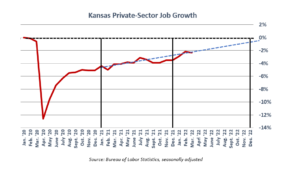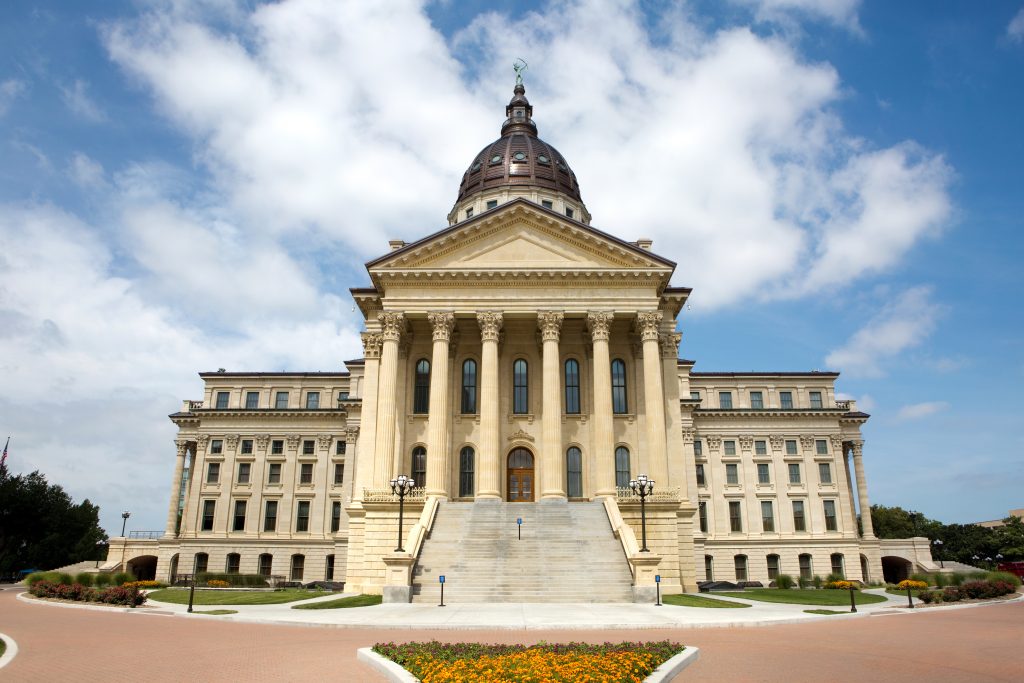The March Labor Report from the Kansas Department of Labor shows Kansas lost 1,800 private-sector jobs and continues its post-COVID-10 stagnation. This represents a monthly job growth rate of -0.2%, which is the first month of negative growth since September 2021. At the same growth rate that Kansas has experienced since the start of 2021, the state will fully recover to its pre-pandemic level of jobs by the end of this calendar year at the earliest. Kansas is still 27,100 jobs below its January 2020 levels.
 The decrease this month occurred due to 900 Construction jobs, 700 Financial Activities jobs, 500 Retail Jobs, and 500 Food Services jobs being lost. Arts and Entertainment gained 700 jobs, with job gains and losses being below 300 for other sectors such as Education and Management. Kansas lost 500 government jobs in March, with 400 of those coming from the local level.
The decrease this month occurred due to 900 Construction jobs, 700 Financial Activities jobs, 500 Retail Jobs, and 500 Food Services jobs being lost. Arts and Entertainment gained 700 jobs, with job gains and losses being below 300 for other sectors such as Education and Management. Kansas lost 500 government jobs in March, with 400 of those coming from the local level.
The unemployment rate in Kansas remains at 2.5% – the same it was last month. At the same time, Kansas’ labor force participation rate slightly increased from 66.2% to 66.3%, mostly from people finding employment, despite the net job losses.
While Kansas still struggles well below its pre-pandemic job levels, numerous other states have already exceeded that same pre-pandemic threshold and broke their stagnation. For instance, Utah and Idaho both have 5.1% more jobs in February 2022 than they did in January 2020. According to the Bureau of Economic Analysis, states experienced a 4.8% increase in private-sector job growth on average, but for Kansas, this number was only 1.5%. Wages similarly are 0.9 percentage points below the U.S. average.
While small tax relief packages – some recently passed by the Kansas legislative – are a step in the right direction, Kansas needs to fundamentally reconsider its economic policies if its wants to see long-term growth instead of stagnation. Keeping taxpayer cash in wallets instead of wasteful subsidies is a place to start, as is reforming regulations and controlling the size of government.





